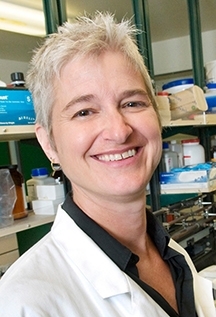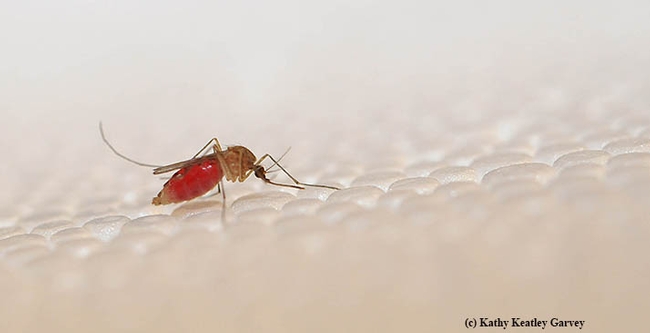It's good to see UC Davis mosquito researchers featured in the KQED's science program, "Deep Look."
KQED journalists recently traveled to the UC Davis campus to visit several mosquito labs. The end result: The KQED news article on “How Mosquitoes Use Six Needles to Suck Your Blood,” which includes an embedded video. The National Public Radio's health blog, “Shots,” includes a shorter version. You can also see the Deep Look video on YouTube (embedded below).

- Parasitologist and entomologist Shirley Luckhart, professor in the UC Davis School of Medicine's Department of Medical Microbiology and immunology and the Department of Entomology and Nematology
- Medical entomologist Gregory Lanzaro, professor, Department of Pathology, Microbiology and Immunology (PMI), UC Davis School of Veterinary Medicine, and an associate of the UC Davis Department of Entomology and Nematology
- Chemical ecologist Walter Leal, professor in the UC Davis Department of Molecular and Cellular Biology and former chair of the UC Davis Department of Entomology
- Virologist Lark Coffey of PMI
- UC Davis post-doctoral researcher Young-Moo Choo of the Leal's lab who discovered a receptor by dissecting mosquitoes' mouthparts and genetically testing them.


“Mosquitoes don't find the blood vessel randomly," Leal said, pointing out that the receptors respond to chemicals in the blood.
The receptor that the Leal lab discovered is called 4EP, and may lead to drug companies developing new mosquito repellents. “First they'd need to find a repellent against the receptors," Choo told Quirós. "Then they'd treat people's skin with it. When the mosquito tried to penetrate the skin, it would taste or smell something repulsive and fly away.”

But back to the video. The narrator reveals the sophisticated tools that the mosquito uses to draw your blood.
- A protective sheath retracts: inside are six needles, and two of them have sharp, tiny teeth
- The mosquito uses the sharp, toothed needles to saw through your skin
- Other needles hold the tissues apart while she works
- Receptors on the tip of one of her needles guide her to your blood vessel.
- She uses the same needle like a straw to sip your blood
- She uses another needle to spit chemicals into you so your blood will flow easily. That's what gives you the itchy, scratch-me-now welts.
Of course, it's the viruses or parasites that the mosquito transmits that can sicken and kill us. Depending on the species, they give us such diseases as malaria, dengue, yellow fever, West Nile virus, Zika virus and elephantiasis.
As KQED says "This is the deadliest animal in the world. Mosquitoes kill hundreds of thousands of people each year...the most vulnerable people: children and pregnant women."
KQED performed an excellent public service in reporting and sharing this scientific information, gleaned from the UC Davis labs. The first day the video was posted, it drew nearly 400,000 views.
We worry about what mosquitoes do to us. If mosquitoes could talk--if they could communicate with us--they ought to be worried about what we're going to do to them.
(Access the American Mosquito Control Association website to learn the biology of mosquitoes.)
Attached Images:
